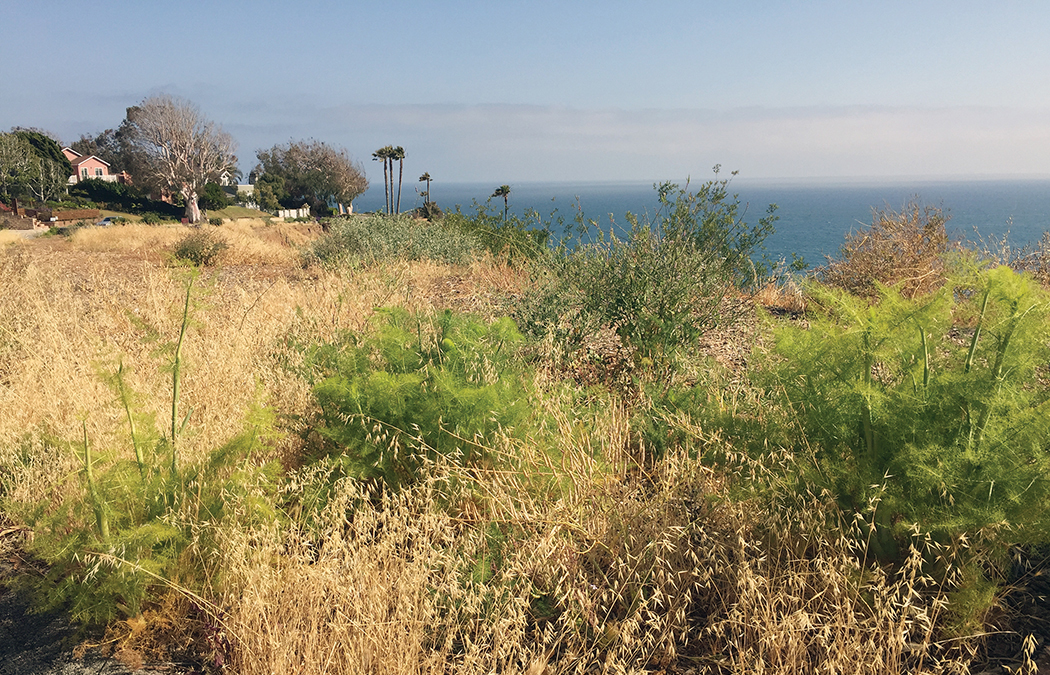In April, Monsanto’s insecticide Roundup, which is one of the most popular American herbicides and also one of the most controversial, was sprayed on the bluffs below Via de las Olas and El Medio and along both sides of lower Temescal Canyon Park.
Concerned residents contacted the Palisades News, the L.A. Department of Recreation and Parks and the forestry division to register their opposition to the use of Roundup. Although Monsanto argues that its product is safe, residents said some studies have implicated Roundup in bee colony collapses, monarch butterfly die-offs, Parkinson’s disease, cancer cases and autism’s rise.

“At a time when we are losing so many of our species, losing the bees, the butterflies and as a result the birds and the pollination of our food and flowers, there is no excuse for us not to act where we can, and save what we can,” said resident Barbara Edelman. “If we can’t make a difference locally, we really can’t make a difference anywhere.”
Resident Cary Sullivan also opposes the city’s use of this herbicide. “We who live down near the bluffs are very upset about it and want the city to stop spraying this toxic substance,” Sullivan said. “They have killed most of the bushes and affected some of the trees as well, which is not good. We all go down there [Via bluffs] to watch the sunset many nights a week with our families, dogs, etc., so it is very important to us as a public space to keep it not polluted.”
Rose Watson, the city’s public information officer, said the city sprays Roundup twice a year in Palisades parks and the bluffs, but had recently stopped spraying due to resident complaints that began on April 26.
Based on information she received from the forestry division, Watson said that reducing weeds to help prevent brush fires was one reason for spraying Roundup. “It hasn’t been proven that it kills off the bees and butterflies,” Watson said she was told. “In order to avoid brush fires we do use Roundup to kill off the weeds and to keep them from growing rapidly.”
Glyphosate, the herbicide in Roundup, was first synthesized in 1950 and discovered to be a herbicide in 1970. Monsanto brought it to market in 1974, according to Wikipedia. In 2007, it was the most used herbicide in U.S. agriculture and the second most common for home use. Monsanto also produced genetically modified crops, which were glyphosate resistant, so the herbicide became popular because it could kill weeds, while the modified food crops continued to grow.
However, glyphosate-resistant weeds have emerged, according to Wikipedia, and Roundup use has increased 100-fold by 2016 in response.
UCLA professor emeritus John Froines, who lives in Santa Monica, said the International Agency for Research on Cancer (IARC), the “most prestigious body in the world on carcinogens,” has labeled Roundup’s glyphosate a carcinogen.
“If they say it’s a carcinogen, you can be sure it is,” Froines, a toxicologist, said. He also noted that since the IARC determination, Monsanto has begun battling IARC.
IARC’s determination was based on the review of more than 1,000 studies, according to its website. Non-Hodgkin’s lymphoma in particular is related to glyphosate. The site uses the phrase “probable carcinogen,” which Froines said government agencies treat as meaning a carcinogen.
MIT senior research scientist Stephanie Seneff said, “Roundup suppresses the cytochrome P-450 enzymes in the liver, which makes the bees/butterflies/humans much more sensitive to toxicity of other environmental toxins (such as the insecticides) because they can no longer metabolize them (clear them from the body). . . . I have recently become aware that it is possible that glyphosate may be substituting for glycine by mistake during protein synthesis. If this is true, then it explains the correlations we’re seeing in the alarming increase in Roundup usage on core crops and the long list of modern debilitating diseases,” including autism, various cancers, Parkinson’s disease, and many others.
By LAUREL BUSBY
Staff Writer
Local bluffs were sprayed with Roundup by the City.












You must be logged in to post a comment.